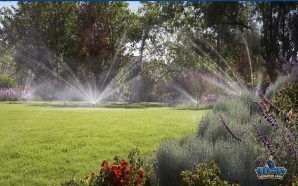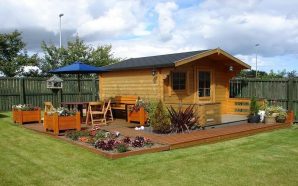There’s something quietly magical about keeping bees in your own garden. Not just for the golden jars of honey, but for the rhythm it brings to your days.
And once you’re in, you’ll never quite look at your flowers the same way again.
Start with the Rules, Win Over the Neighbours
Before you lift a lid or buy a single bee, get familiar with the rules where you live.
Many councils have specific guidelines about how many hives you can keep, how far they must be from fences, or whether you need permission to begin. Your local authority or beekeeping club will usually point you in the right direction.
Even when rules are fairly relaxed, you’ll want to stay on the right side of common courtesy. Bees, after all, don’t respect fences, and neighbours might not share your enthusiasm.
Some may worry about allergies, while others simply don’t like the idea of buzzing insects flying overhead. The best approach is to be upfront.
A friendly conversation can ease concerns and help prevent misunderstandings. It also proves that you’re taking things seriously from the outset.
That sense of consideration goes hand in hand with being part of a wider beekeeping network.
Joining a hometown apiculture group offers support, practical know-how, and a sense of what’s typical in your area, making you a more thoughtful and confident keeper from the very beginning.
Choose a Hive That Matches Your Ambitions
There’s no one-size-fits-all hive, and what suits one person might frustrate another.
The Lang troth is easily the most popular option in the UK, and for good reason. With its stackable frames and smart design, it offers generous honey yields and a tidy maintenance routine. Ideal for those who like things neat and fairly hands-on.
For something a little more traditional, the Top Bar Hive is worth a look. It echoes the way bees would naturally build their combs and feels more observational than productive.
That said, it’s less focused on harvesting honey and more about watching the colony thrive. Meanwhile, Warre Hives take a low-intervention approach and may suit those who want to give bees more independence, though they’re trickier for beginners.
As you weigh up your options, think about what you want out of the experience. Are you after honey or harmony? Is your time limited, or are you keen to dig in? Additionally, consider your budget and how the hive will fare in your climate.
Pick a Spot Where Bees and People Can Coexist
The location of your hive matters more than you might think.
Bees need sunlight to stay warm and active, as well as shelter from harsh winds and rain. A hive that’s tilted slightly forward will stop water from pooling and help keep the interior dry through the wetter months.
Choose a space that suits the bees without unsettling everyone else. Ideally, the hive entrance should face away from paths and gathering spots.
Bees prefer an open flight path, and people prefer not to be surprised by them. That’s why a tucked-away corner with good sun exposure often strikes the right balance.
Nearby blooms will encourage bees to forage close to home, saving them energy and increasing productivity.
If your garden is still a work in progress, this can be the perfect time to think about landscape design that supports pollinators. Blending form with function means the bees thrive and your space becomes more inviting, too.
Think also about access. You’ll need to inspect the hive fairly regularly, so pick a spot you can reach easily without trampling the borders or climbing through brambles.
Kit Up for Comfort and Confidence
Beekeeping gear doesn’t need to be flashy, but it does need to work. A well-fitting bee suit, gloves, and veil are your first line of defense. Even the calmest hive can get agitated, and a good kit ensures you stay safe without fuss.
A smoker is invaluable. A few gentle puffs help mask alarm pheromones and make inspections smoother. Hive tools help lift frames and separate boxes without disturbing the structure. A soft brush can also be handy for moving bees without injury.
Starter kits are often worth the investment, offering a bundle of essentials at a decent price. Still, it pays to spend slightly more on quality—it lasts longer and is much more comfortable to use.
Local suppliers often stock trusted brands and can give advice tailored to your needs. Some even offer used gear or rentals, which is ideal when you’re just getting started.
Sow the Seeds for a Buzzing Retreat
Healthy bees require a steady supply of nectar and pollen. One of the best things you can do is create a garden that feeds them from early spring through to late autumn. The more variety you can manage, the better.
Native plants are usually the most reliable, requiring less maintenance and offering the right kind of nutrition for local pollinators.
For instance, wildflowers, herbs like borage and thyme, and flowering shrubs such as rosemary or dogwood all do brilliantly. Remember to plant in clusters, so the bees don’t waste energy hopping between distant spots.
Beyond that, avoid pesticides entirely. Even those labelled ‘safe for pollinators’ can cause harm. Instead, opt for companion planting or organic treatments to manage pests naturally.
This is a brilliant excuse to get the family involved. Planting a pollinator patch or tending to bee-friendly herbs becomes more meaningful when everyone understands the impact.
Check In Often, Stay One Step Ahead
Routine inspections are essential to keeping your colony healthy. Bees are remarkably self-sufficient, but small issues can escalate quickly if left unattended. A quick check every two weeks during the active season will usually suffice.
Start with simple observations. Are the bees coming and going regularly? Is there pollen being brought in? Open the hive with care, and check for signs of disease or pests such as the Varroa mite.
Confirm that the queen is present and laying—spotting eggs is usually enough to know she’s still doing her job.
Furthermore, keep a record of what you see. A notebook or phone app will help you track patterns and spot changes before they become problems.
If the colony seems sluggish or aggressive, or if you notice anything unusual, seek advice promptly. Most challenges have simple solutions once recognised.
Always move slowly and gently. Bees respond best to calm, confident handling. Over time, you’ll get a feel for what’s normal and when something seems off. That awareness is half the skill of successful beekeeping.
Conclusion
Keeping bees brings a subtle joy that grows more intense with each season. It’s about care, observation, and sharing space with something marvelously industrious.
So, start slow, stay curious, and you’ll soon find your garden humming with purpose.









